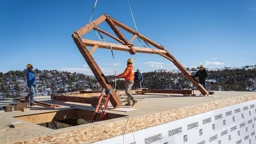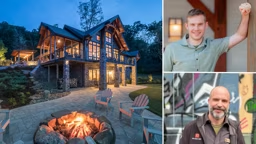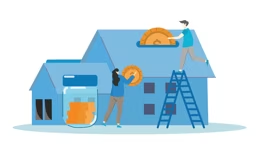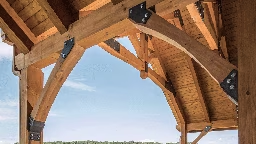
According to Jeff Bowes of Canadian Timberframes, opting for air-dried timbers could save a “huge amount of energy” — and that’s not all. “Kiln drying typically adds about 10 to 15 percent to the cost of the frame,” he says. “You’re cooking the timbers very aggressively and it costs money to power those kilns. You’re also adding another place where the timbers need to be shipped, which adds time to your project. Plus, kiln drying can cause timbers to twist and check more than they would naturally, which won’t affect the structural integrity of your home, but could render some wood unusable. In fact, if we know we’re going to use 25,000 feet of timber for a home, we’ll typically need 27,000 feet because we know a lot of it won’t make it through the drying process.”
If your schedule allows or you can plan well enough in advance, ask your timber company about the possibility of air drying your timbers. Another popular choice are green timbers, which are economical and easy to craft due to their high moisture content. Remember, though, that the downside to green wood is that what you see at the onset isn’t necessarily what you get in the end, since these timbers still have a lot of drying to do. Make sure to explore all your options before making a decision.
See also Reclaimed Wood in Timber Home Design











